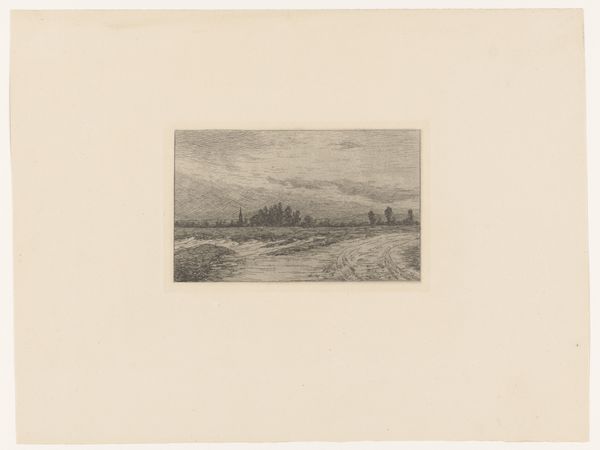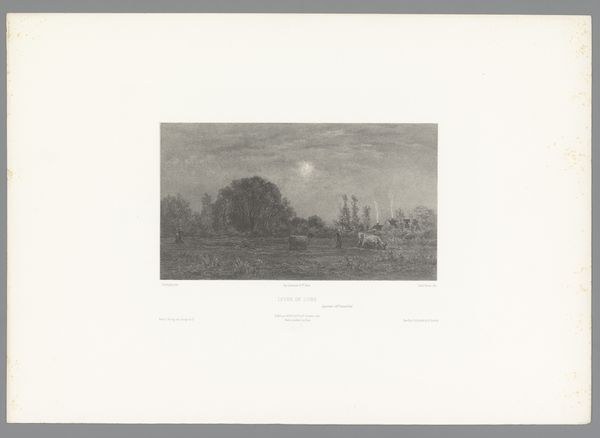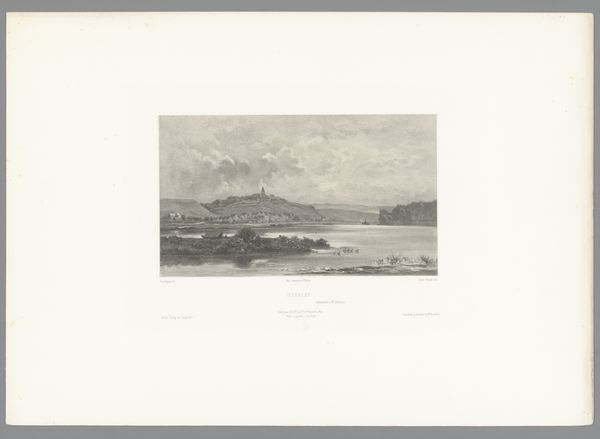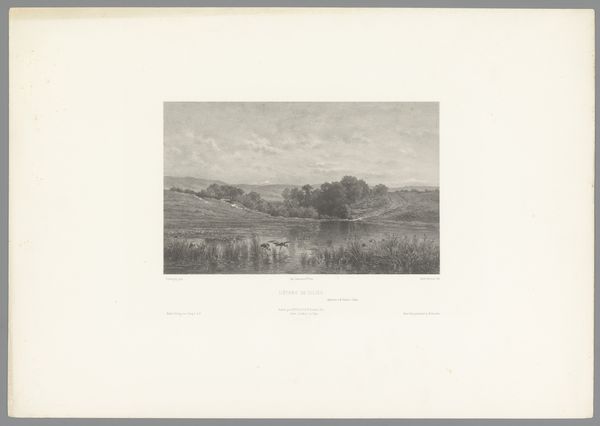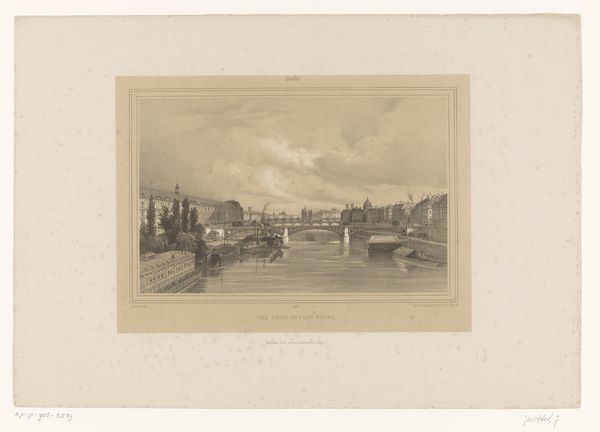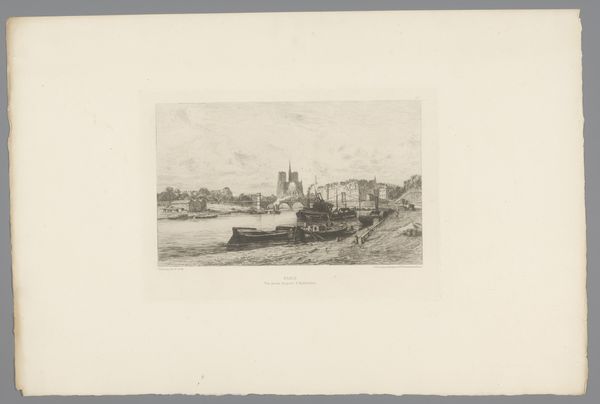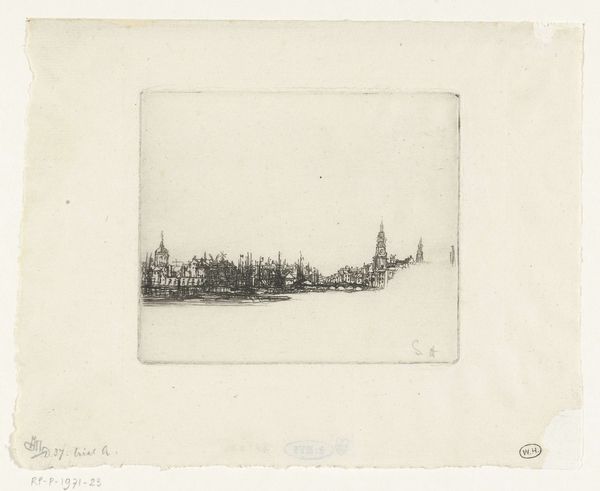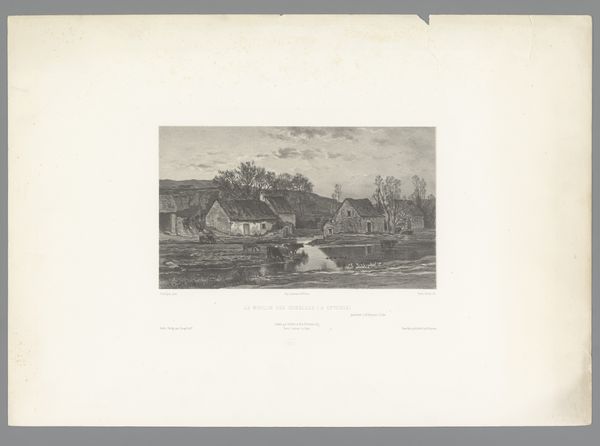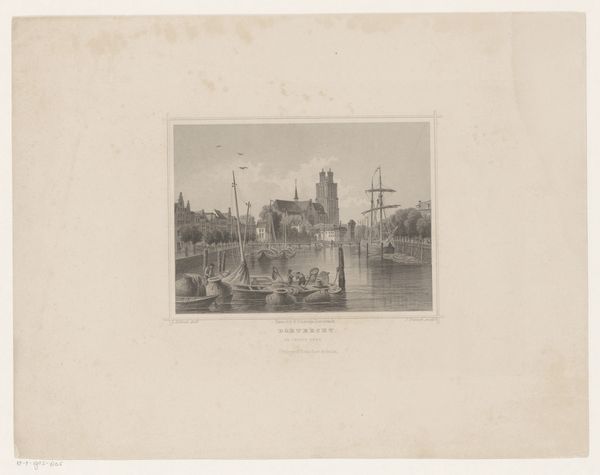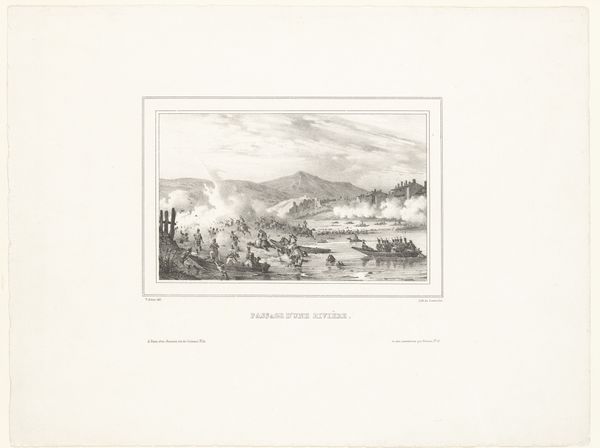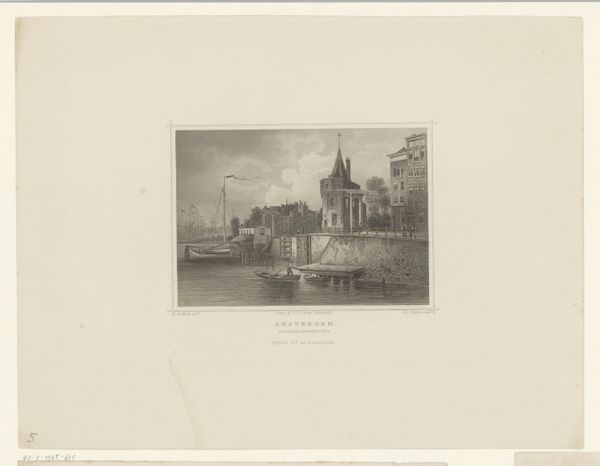
print, etching
# print
#
french
#
etching
#
landscape
#
realism
Dimensions: height 402 mm, width 570 mm
Copyright: Rijks Museum: Open Domain
Curator: Here we have "The Island of Vaux near Auvers-sur-Oise," a work produced as an etching by the French artist, Emile Louis Vernier, around 1870. Editor: There’s a melancholy mood that washes over me looking at this. The scene is very still, very quiet, isn't it? That reflecting river looks like glass. Curator: It's interesting you mention that, because I see Vernier focusing so intently on representing a very specific locale using etching. I wonder about the printing process—what sort of papers were common at the time, who would have purchased such an etching, what its social role might have been in documenting landscape... Editor: For me, it evokes this feeling of transition. Look at the lone boat. Is it arriving or leaving? And what about that somewhat distant monument. It gives a funereal air to it. Like some memory floating on the water. I feel a sense of fleeting moments being captured for reflection, pun intended. Curator: Right, and Auvers-sur-Oise had become something of an artist's colony by this point. To what extent did Vernier see himself participating in the visual language of the Barbizon school, which so elevated the depiction of landscapes in French visual culture, how might this specific location been chosen? How does its topography lend itself to easy representation via printmaking? Editor: Perhaps he chose this spot because the mirror-like river amplified this theme of memory and reflection, drawing a direct line between what is and what once was... I wonder if viewers at the time saw this work in a similar vein? Did it become associated with grief or mourning somehow? The date is relevant here too –1870, after all, the year of the Franco Prussian war. Curator: That date certainly colors it differently for us now, doesn't it? Maybe the work provided the public a new view of specific place that they had only imagined. One that wasn't filtered through painting... What the market conditions that sustained such an undertaking. Editor: The symbols feel quite potent. It speaks to how artists can capture deeper human experiences. That etching has so much to offer, even now. Curator: Precisely, when we consider what exactly, materially speaking, made this view visible at that moment, maybe it can help unlock why these landscape have such a strong staying power.
Comments
No comments
Be the first to comment and join the conversation on the ultimate creative platform.

